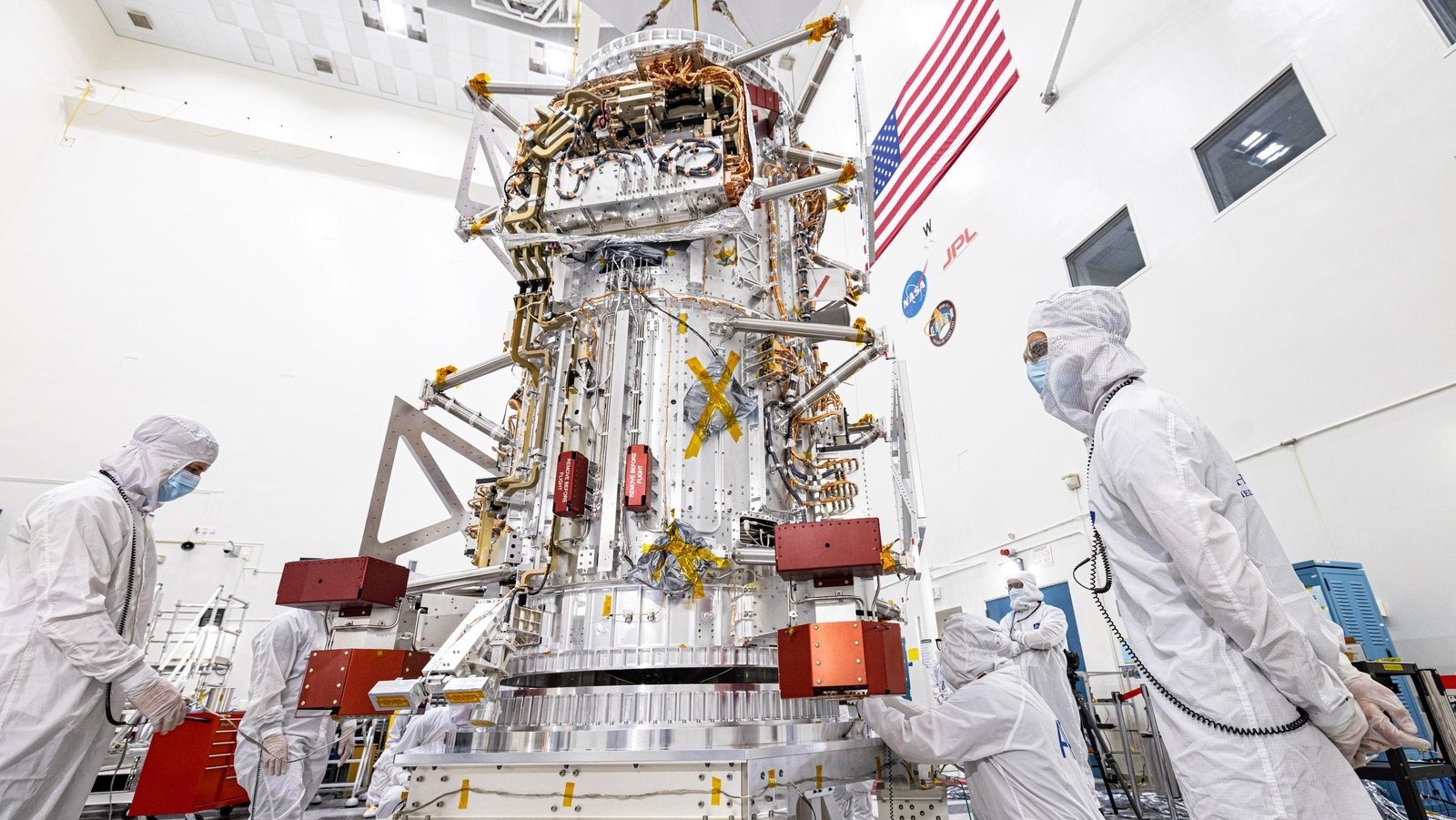
One of the most exciting targets for future missions in our solar system isn’t a planet, but a moon. Jupiter’s moon Europa has a thick, icy shell, but scientists are pretty sure that it also has a liquid water ocean beneath the ice. That means it could be potentially habitable and could be a great place to look for signs of life beyond Earth. That’s why NASA is working on a spacecraft to visit Europa called Europa Clipper, which is set to launch in 2024.
Studying such a distant body isn’t easy, though. Europa’s far away and cold, and the potential ocean that scientists are so interested in is below 10 to 15 miles of ice. To investigate this strange world, Europa Clipper will be armed with nine science instruments including a spectrograph and a thermal camera. These instruments will allow the craft to record information on Europa’s icy surface, its mysterious interior, and also its atmosphere. Taken together, these readings should allow scientists to measure the depths of its ocean and how salty it is in addition to getting more accurate measurements of the thickness of the ice crust.
Another useful feature that scientists want to study is the plumes of water that could spray from beneath the crust up and over the surface. Europa generates heat from the gravitational forces that pull it around and warm up its interior, and this heat (rather than heat from the distant sun) keeps the water beneath its surface from freezing. These same forces might create water plumes, and could even help mix the subsurface ocean and circulate chemicals that are important for life like carbon, hydrogen, and oxygen.
Building the Europa Clipper
The Europa Clipper has a main body that measures 10 feet tall and 5 feet wide; it’s made of aluminum in a cylinder shape that holds key components like electronics and radio systems. When fully completed, NASA’s Jet Propulsion Laboratory (JPL) says it will be as large as an SUV, and when its solar panels are deployed it will be the size of a basketball court.
In addition to the spacecraft systems and instruments, another key component is the array of 24 engines that will allow the craft to travel through space on its 1.8-billion-mile journey. “Our engines are dual purpose,” explained Tim Larson, the deputy project manager at JPL. “We use them for big maneuvers, including when we approach Jupiter and need a large burn to be captured in Jupiter’s orbit. But they’re also designed for smaller maneuvers to manage the attitude of the spacecraft and to fine tune the precision flybys of Europa and other solar system bodies along the way.”
In June 2022, JPL announced it had received the spacecraft’s main body at its facility in Southern California. JPL engineers will now set about installing and testing the spacecraft’s instruments, as well as installing other key components before the final testing of the craft before launch. “It’s an exciting time for the whole project team and a huge milestone,” said the JPL mission project manager Jordan Evans. “This delivery brings us one step closer to launch and the Europa Clipper science investigation.”
